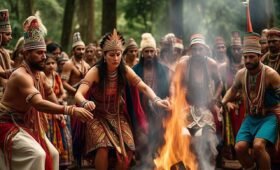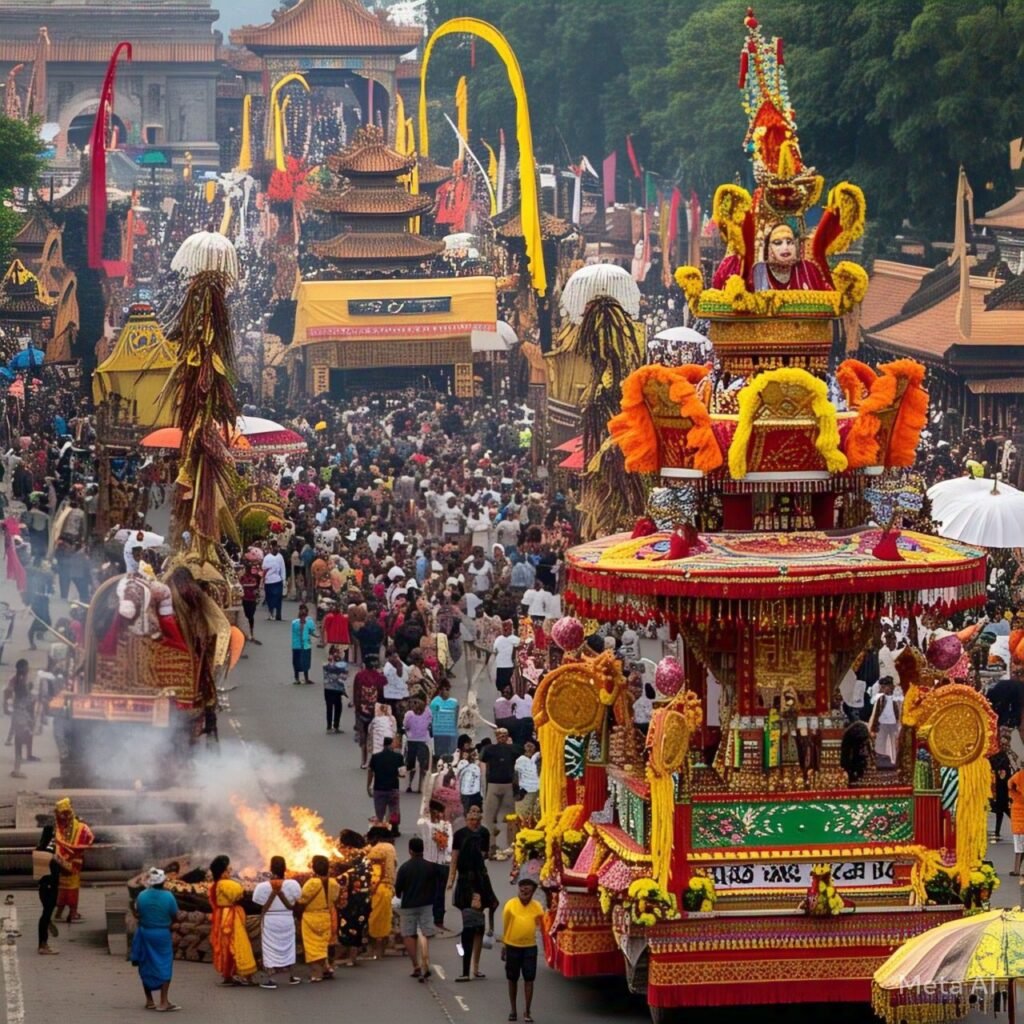
Each city, nation, and cultural community possesses unique traditions: methods of indicating the passing of time, recognizing milestones, and ritualizing important elements of culture and spirituality.
Some global rituals are performed as a silent moment of reflection; others represent an occasion for a joint festivity.
Whether it’s a long-standing tradition carried out since ancient times or a new event that has emerged in recent years, joining in as an outsider is a fantastic way to broaden your perspective.
In this new series of posts, I’ve collaborated with over 60 travel writers who share their favorite festivals, rituals, and ceremonial experiences in their home countries or while traveling abroad.
Purification ceremony in Bali, Indonesia
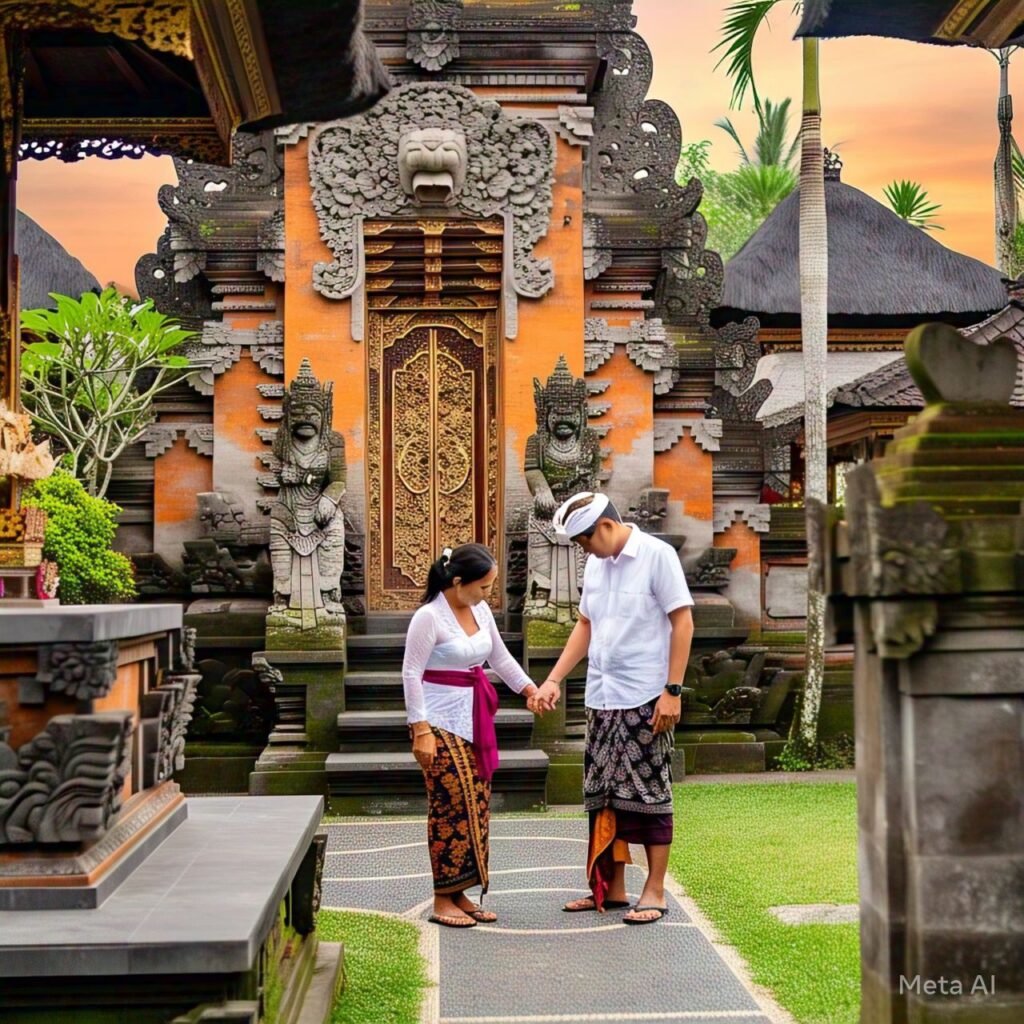
If you want to experience something out of the ordinary while in Bali, consider the purification ritual at the Tirta Empul Temple.
Devotees of Balinese Hinduism from across the island gather at Tirta Empul Temple to partake in a purification ritual that uses holy spring water to cleanse the mind, body, and spirit. For more than a millennium, the temple has existed and is devoted to Vishnu, the Hindu deity of Water.
The purification ritual involves several steps, such as meditating, making a small offering, and cleansing oneself under various spouts or fountains of holy water. The spouts each carry a distinct significance and aim, which is why it is crucial for the ritual to be performed properly.
Interested in the purification ritual? Today, tourists have the opportunity to take part in the purification ritual themselves; however, it is crucial to adhere closely to the steps and to show respect for the ritual. One of the most memorable aspects of my trip to Bali was taking part in the purification ceremony at Tirta Empul Temple.
It’s an extraordinary experience that isn’t seen every day, and I suggest it to anyone interested in learning more about Balinese Hindu culture.
Boun Lai Heua Fai, located in Laos

The Buddhist festival Boun Lai Heua Fai, meaning ‘floating boats of light’, is celebrated in Laos annually on the full moon of late October. The festival takes place at dusk to invoke the phanga naga (water spirits) and to attract good fortune.
Throughout the day, Lao got ready small round “boats” made of banana leaves and adorned with vibrant flowers, incense sticks, and candles. As night descends, the artisanal boats are launched onto the Mekong River, candles shining, to remove any ill fortune.
Both Luang Prabang and the capital Vientiane celebrate the Lai Heua Fai Festival. Every year, I take part in the event in Vientiane, launching a vibrant banana boat into the water.
Laos welcomes visitors to get involved as well. At dusk, just go to the Mekong Riverfront (Quai Fa Ngum Road) and buy a decorative boat from one of the many vendors along the river for a few kip.
Head down to the water (aim for directly in front of the Chao Anouvong Statue) where you can launch your boat from a bamboo platform. As this is a Buddhist ceremony, attendees are expected to dress respectfully, ensuring that shoulders and knees are covered.
Japan’s customary tea ceremony

One of Japan’s three principal classical arts is the Japanese tea ceremony. The performance involves the expert preparation and serving of powdered green tea, which is also referred to as matcha. This lovely ceremony boasts a long history, tracing its origins back to the 9th century. Its primary influence is Zen Buddhism.
A tea ceremony comprises many intricate elements, such as the tatami tea room adorned with seasonal flower arrangements and a calligraphy scroll, and the tea master, who often wears a traditional kimono; the overall aesthetic is simply stunning. Throughout my two-year residence in Japan, I had the opportunity to participate in several tea ceremonies.
The tranquil atmosphere in the room while guests watched the tea master prepare the tea was something I always appreciated. I was always entranced by the elegant and exacting motions of the hand movements.
In cities like Tokyo and Kyoto, there are numerous opportunities for foreigners to partake in a Japanese tea ceremony while visiting Japan. The costs vary from 500 yen to 5000 yen, depending on the ceremony’s length and extravagance.
Two well-known budget-friendly accommodations in Tokyo for travelers to Japan are Kyoto-kan (offering a 20-minute condensed tea ceremony for 500 yen) and Nadeshiko (providing a full tea ceremony priced between 4000 and 5000 yen).
The tea masters will instruct you on the proper procedures and etiquette during the ceremony. So take it easy and don’t fret about committing a faux-pas. I was most astonished by the fact that you are meant to slurp the tea loudly as a sign of its deliciousness.
Thanaka aus Myanmar (Burma)
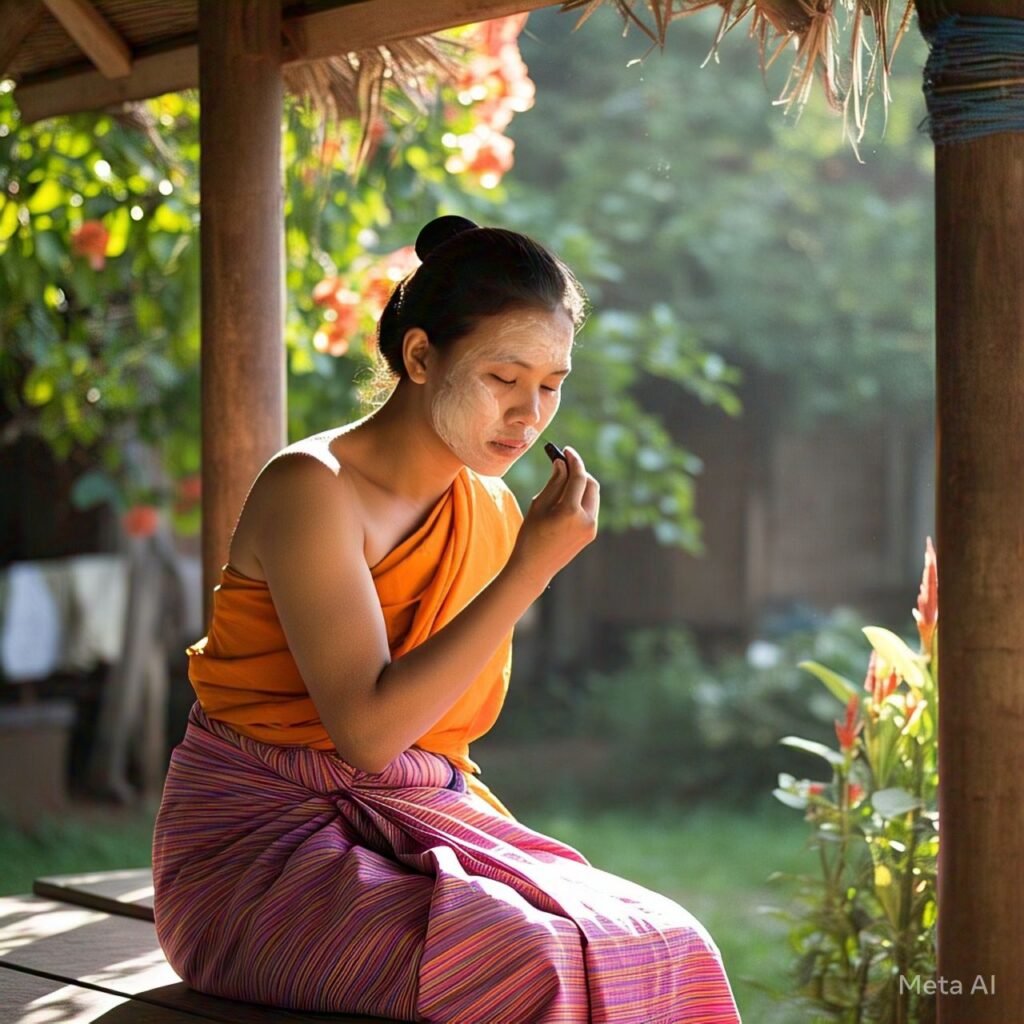
Thanaka, a creamy white cosmetic produced from the ground bark and roots of the thanaka tree, is commonly used by both genders in Myanmar. The paste is used on the face to avert skin sunburn, prevent acne, and soften the skin. In addition, it is thought to produce a cooling effect in the tropical heat of Burma.
This is the reason women in the country continue to use thanaka as part of their long-standing beauty practice.
Nowadays, women and young girls can be seen covering their faces and hands with the ubiquitous thanaka paste. They grind the paste and apply it as part of their everyday routines. Burmese men also apply thanaka daily before heading out of the house.
Thanaka is used in circular or striped patterns, as well as decorative leaf designs on the cheeks and forehead. Thanaka logs are available for purchase at local markets and souvenir stores nationwide. Once you grind them on a grinding plate, you will have your own thanaka paste ready.
Using thanaka has become a significant aspect of Burmese life and culture. Every morning, the ritual is carried out in private homes, making it a strictly personal affair.
When finished, people emerge stylishly, their faces adorned with the paste. It is a stunning sight, at times even more attractive than that of the lovely pagodas of Myanmar.
Rituals at the Pachamama Temple in Peru and Bolivia

In the cultures of Bolivia and Peru, people place unrestricted faith in natural deities. The local inhabitants hold the belief that earth, water, fire, wind, and plants – all vital components of the ecosystem – are deities. Because these mighty elements can change lives in an instant, it is only natural for indigenous communities to regard them as guardians.
While I was on Amantani Island in Lake Titicaca, Peru, our host invited us to follow her as she exited her adobe house. Wearing a vibrant jobona and pollera, she continued to knit while walking up the steep incline. We followed her to the top of the highest hill on the island, where the local community has built a temple for Pachamama.
While I don’t have a strong belief in temples, there are times when I enjoy absorbing the faith of those around me. And that is exactly what I did. With my hands clasped, I circled the temple, hoping that the island would remain safe.
From that peak, I observed the whole of Amantani village lying on the azure lake. As I listened to the lake crashing against the shore, I began to appreciate how Peruvians respect nature. Ultimately, who would want to vie against Mother Nature?
Austria’s Almabtrieb

Look for an Alpine village where the people still rejoice over the safe return of their cows from the mountain pastures at the end of the summer if you’re ever in Austria in the fall. One of Austria’s most vibrant traditional celebrations is known as an Almabtrieb.
Austrian cows take a “holiday” in the summer, much like the majority of humans do. After spending the winter indoors, they are brought to the high Alpine pastures to graze freely. It was a very risky voyage in the past. The Almabtrieb was created by the farmers to commemorate the animals’ safe return to their valley habitats.
The cows are “dressed” in gorgeous collars and headsets with enormous bells hanging from them as part of the Thanksgiving custom. Because of this, you hear them enter the village long before you really see them. In many villages, the Almabtrieb coincides with the annual Harvest Thanksgiving Festival.
Additionally, it gives the locals a chance to display their other customs and abilities. There are many people wearing dirndls and lederhosen, and they’re not merely for show!
Because of the increased interest in the Almabtrieb, some villages have started to plan their activities to make it simpler for tourists to attend. Reith im Alpbachtal in the Tyrol is home to one of the more well-known ones, although nearly every weekend in September and October, there is a festival in Austria.
Mexico’s Día de Muertos

The Day of the Dead, or Día de Muertos, honors the lives of departed loved ones. When people in Mesoamérica realized that death was a path to the Kingdom of the Dead, which they named Mictlan, this custom began.
The custom changed to its current form after the Spanish arrived in Mexico.
On November 1st and 2nd, the deceased come to visit their kin from the beyond. Living relatives make shrines (called ofrendas) to aid them find their way home, embellished with pictures of their departed loved ones and things they treasured while they were here.
Ofrendas are occasionally even made for dogs! Throughout the days of the festival, the ofrendas are kept ready with candles lighted and are usually decorated with the customary papel picado, sugar skulls, and yellow flowers known as Cenpasúshil (or marigolds in English).
Children who have passed away are traditionally honored on November 1st, while adults are honored the day after. Although public ofrendas produced by government agencies or colleges are typically built in the weeks preceding the festival, ofrendas are typically prepared starting on October 28.
On the afternoon of the first day, people in some towns will go out into the streets to visit the pantheon where their loved ones are interred. While death might be a somber and depressing topic for many, individuals who participate in these festivities in Mexico view it as an opportunity to recall the happy times.
The film Coco has undoubtedly contributed to the recent surge in popularity of Day of the Dead. Because of this, a lot of people now come to Mexico to enjoy the holiday. Some communities are beginning to use the excitement surrounding the holiday to develop extranjeros-focused Day of the Dead festivals and activities. Mexico City’s Day of the Dead parade is the most notable.
It’s crucial to treat outsiders with respect when sharing this celebration, even if Mexicans are usually delighted to do so.
Recall that although it is a joyous occasion, it is also very sentimental. Attend the parade, go to the ofrendas, and take in the celebrations; nevertheless, unless you are invited, do not encroach on the privacy of those who are visiting their loved ones in the cemetery.
Oaxaca, Merida, Guanajuato, and Mexico City are popular destinations for tourists to take part in the Day of the Dead celebrations. You are welcome to participate in the art and celebrations that surround the event in each of these cities!
If you’re planning to visit Mexico for Dia de Muertos you’re sure to have a great time.
China’s Lunar New Year

One of the world’s most thrilling holidays is Chinese New Year. Of course, speaking as a Chinese-Canadian, I’m obviously a bit biased. The Lunar Calendar states that CNY celebrations might go on for up to two weeks.
Chinese New Year is a time of many rituals and traditions. Even better, they are packed with fantastic meals, wild family gatherings, and never-ending excursions. It is advised to do some study in advance because the celebration dates vary year.
Many countries celebrate Chinese New Year because of the Chinese diaspora. However, nothing compares to the festive atmosphere in China, in my experience. I’ve seen some of the most amazing firework shows, rows and rows of red lanterns, and dramatic dragon and lion dances on the streets.
In Chinese culture, red symbolises wealth, positivity, health, and all sorts of positive vibes. This color is frequently seen in Chinese couplets and traditional attire. For kids, the color red also means “lucky money.” Younger generations are given these tiny envelopes as a token of good fortune and luck.
For visitors, CNY entails an urban area decked out with lights and music, a plethora of public acts, and a vibrant vibe that animates the streets. For instance, tens of thousands of trees adorned with lanterns tower tall in my city of Xi’an.
For musicians and artists, public arenas turn into playgrounds. The streets are lined with flutes and drums, and there is a lot of conversation and laughter. It’s very simple to get caught up in the vibrant atmosphere, join in the celebrations, and join the crowd in celebrating!
Spain’s Las Fallas de Valencia

One of Spain’s most amazing celebrations of St. Joseph’s Day and the arrival of spring is Las Fallas de Valencia.
In the Middle Ages, craftspeople would burn broken and superfluous wood that they had stored during the winter to get rid of it and welcome spring. As the custom developed throughout time, these wooden objects were fashioned to resemble human figurines wearing clothing and other accessories.
Today, this ritual is an organised celebration that takes place on March 15th to 19th every year. On the final day of the event, a large display of cardboard and paper-mache statuettes is constructed in each neighborhood of Valencia, Spain. In addition, there is an annual theme, prizes, food vendors, illuminated streets, parades, fireworks, and much more.
There is no cost to attend the festival. You should go to the many activities, check out every neighborhood, and be ready for the loud and people if you want to get the most out of it. Additionally, you should reserve your lodging and airfare at least a few months in advance.
As is the case with all Spanish holidays, the festival is about people coming together and celebrating with their loved ones, not simply about the sculptures and events.
Italy’s Regatta Storica in Venice

One of the most cherished and well-liked yearly events in the Italian city of Venice is the stunning and historic Regatta Storica, which takes place on the first Sunday in September.
Since Venice has been celebrating the city’s history in a grand way for thousands of years, this historical event is an important component of Venetian culture.
Rowing contests between row teams and a historical boat procession are the two main events of the yearly celebration. Ornate boats are exquisitely painted, adorned, and rowed across Venice’s canals during the historical section.
Rowers taking part in the historical commemoration often sparkle in costumes and mimic personas of historical characters. Boats are decorated in a variety of ways and colours, and are enthusiastically welcomed by onlookers.
Finding a comfortable place to sit along the main Canal Grande path is crucial for visitors to Venice during the Regatta Storica. In addition to the hundreds of visitors who come to Venice at the end of summer to take advantage of some of the milder weather that Italy has to offer, this event is very well-liked by Venetians.
Several hours before to the commencement of the celebration, several people begin scouting locations. However, the procession is lengthy, and if you arrive at least an hour early, it is not too hard to obtain a nice place along the path.
You can spend the day visiting Venice and find a comfortable cafe along the canal to watch the parade just before dinnertime for an even greater experience, as the festival normally starts in the late afternoon.
India’s Dwijing Festival in Assam

For the past three years, the Dwijing Festival—which translates to “river bank” in Bodo—has taken place in Bodoland, Assam, in a picturesque location beside the Aie River.
The Aie, which translates to “mother,” is a notoriously erratic river that floods the settlements along its banks every year. She does, however, offer love and attention to revelers, artists, craftspeople, and tourists during the Dwijing Festival.
Dancers, singers, artists, and people from all over the world come to perform and display their talents during the 12-day Dwijing festival, which was first held to commemorate the start of the new year. It is being used as a time to stimulate and promote sustainable tourism in Bodoland.
Tourists shouldn’t skip tasting out the local delicacies: Fried silkworms, which have a unique nutty taste, fried pigeon and jute leaf curry. People are also drawn to ethnic games where the winners can take home food grains, a goat, or a chicken.
Using traditional materials to create modern necessities is one of the Dwijing Festival’s distinctive features. Bamboo is used to construct the traffic barriers, the dustbins, and the bridge that spans the Aie River.
This festival has a very low admission price of less than $2. Staying at the camping grounds in tents that can be rented is the finest way to experience the festival.
Thailand’s Chiang Mai Flower Festival

Every year in February, Chiang Mai, Northern Thailand, hosts the Chiang Mai Flower Festival. A parade through the streets featuring enormous floats decked out in ornate flower displays is the primary event.
With marching bands and dozens of traditional-dressed dancers around them, Flower Queens greet guests from the floats. Groups vie for the most extravagant and vibrant concepts.
The procession circles the edge of the charming Old Town neighborhood of the city. I suggest enjoying an iced coffee while watching the procession pass by while seated at one of the coffee shops that along the old moat. There is a lively local festival vibe, and admission is free.
In India, Diwali

I had been told about the well-known Diwali celebration since I was a young child. From northern to southern India, it is celebrated annually somewhere between mid-October and mid-November and is also referred to as “The Festival of Lights.”
Diwali, arguably the most well-known and emblematic of all Hindu holidays, honors the triumph of light over darkness, good over evil, and wisdom over ignorance.
Although the date of Diwali’s inaugural celebration is unknown, the custom dates back at least 1500 years. Even though Diwali is celebrated all around the world, I suggest traveling to India if you want to see it in all its splendor.
I went to the Jaipur festival in 2018 while I was in India. I will always remember that sight! Even though not everyone filled the streets to celebrate, the entire city went crazy that night.
The city is decked out with flags and flowers as people parade through the streets, and the air is filled with the sound of firecrackers and fireworks starting at around six o’clock in the evening.
Mexico’s Mayan Cleaning Ceremony

We are looking for monkeys in the Yucatan peninsula’s Mexican jungle. There are many natural treasures in the jungle. We are entering a cenote, which is a cave that has water.
According to the Maya, the Cenote serves as a gateway to Xibalba, the home of the gods of the dead. We must perform a cleaning ceremony before entering the Cenote in order to obtain authorization to enter Xibalba and then safely return to the land of the living.
A Mayan cross, which resembles a table, is in front of us. The land of the dead is symbolized by underneath. The globe with numerous pots of offerings is the tabletop. The table legs that are positioned at the cardinal points above curl together to symbolize the branches of the tree of life. The heavens are symbolized by the top.
These kinds of Mayan rituals, which honor the cosmic equilibrium, have been practiced in this area for thousands of years. Unfortunately, much of the material regarding the rites and the beliefs that surrounded them has been lost, despite the fact that the Spanish found Mayan crosses when they arrived.
In order to preserve their ancestors’ history and customs and to maintain a more traditional way of life, the Yucutec Maya still execute this rite today.
Numerous symbols from the Popol Wuj, “The Book of the Council of the Maya people,” as well as the Tzolkin and Haab, the Mayan Callander, are used into the ceremony. The Shaman discusses the ritual’s significance during the process.
In a pottery chalice filled with red-hot embers, he crumbles copal. He waves it over the Mayan cross first, then over us, and a delightfully fragrant smoke billows out.
During an exciting day at Punta Laguna, I took part in the Mayan Cleaning Ceremony. Direct communication is possible if you speak fluent Spanish or Yucutec Maya. It costs roughly 900 pesos ($50) to enter. Inquire about Lia’s Mayan Immersion Tours if you’re looking for an excellent translator, instructor, and guide.
In a pottery chalice filled with red-hot embers, he crumbles copal. He waves it over the Mayan cross first, then over us, and a delightfully fragrant smoke billows out.
During an exciting day at Punta Laguna, I took part in the Mayan Cleaning Ceremony. Direct communication is possible if you speak fluent Spanish or Yucutec Maya. It costs roughly 900 pesos ($50) to enter. Inquire about Lia’s Mayan Immersion Tours if you’re looking for an excellent translator, instructor, and guide.
The Philippines’ Bunglasan Festival in Dumaguete
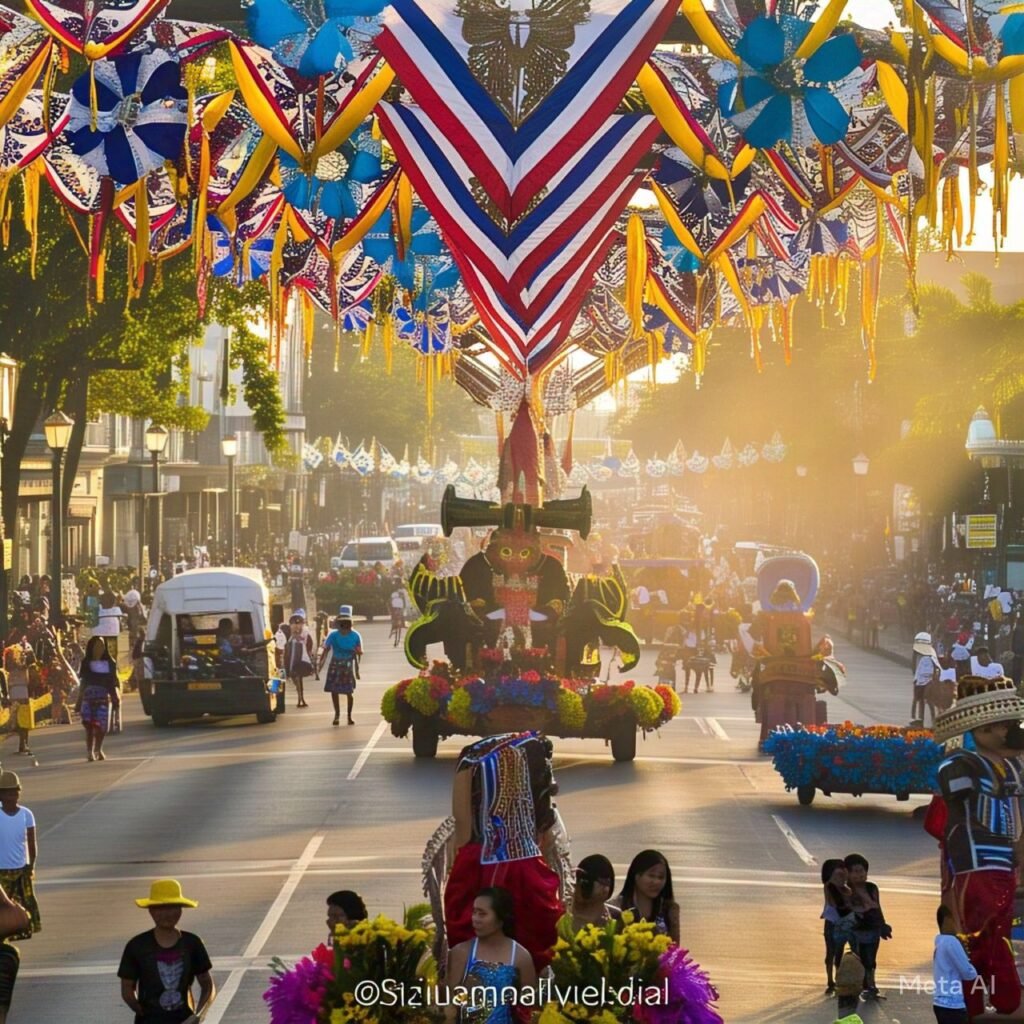
The first festival in the Philippines to combine all of a province’s festivities into one event is the Buglasan Festival. Often referred to as the “Festival of Festivals,” it is a gathering when several communities come together to collectively exhibit their distinct cultures and artistic expressions.
Bunglasan is a festival of friendship and harmony between towns. Luckily, I’ve been able to see the festival virtually every year. Because it showcases the customs and cultures of each town, the show dance is my favorite. Even though the presentation is lengthy, I advise other travelers to watch it as well.
Every town displays a beautifully adorned booth that features their most popular tourist destination or an image that best captures the essence of the place, such waterfalls, caves, volcanoes, or animals. From the stalls, people occasionally sell their own produce and crops.
Without a street dance competition, a Philippine festival wouldn’t be complete, and the Buglasan Festival features some of the most elaborate dances in the nation.
Every other week in October, all of this happens in front of Dumaguete City’s Capitol Hall in Negros Oriental. In order to get the most out of the festival, I recommend going on Friday and seeing the street and show dances before heading to the booths in the evening.
The show dance admission charge is PHP 40.00, plus there are additional entrance fees for certain booths.

